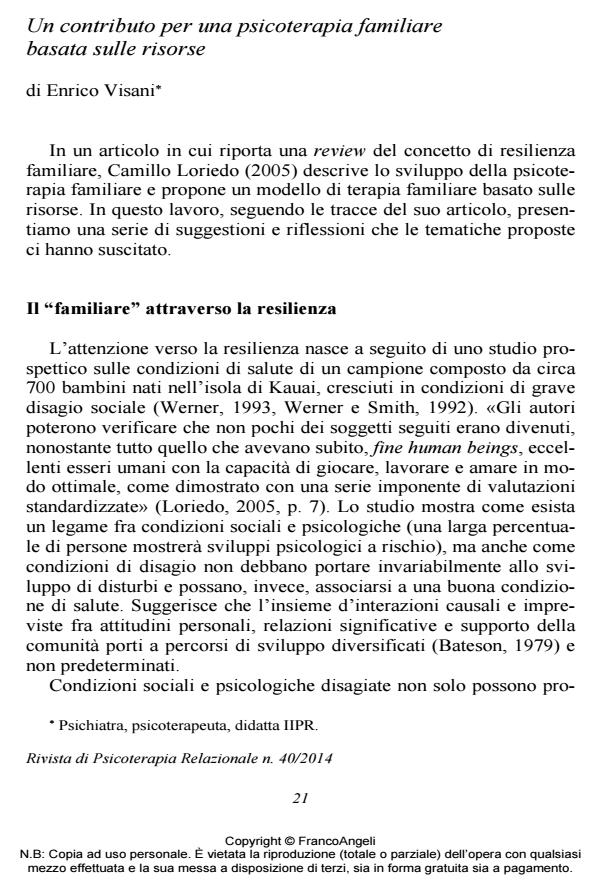Reflections on a Resources Based Approach to Family Therapy
Journal title RIVISTA DI PSICOTERAPIA RELAZIONALE
Author/s Enrico Visani
Publishing Year 2015 Issue 2014/40
Language Italian Pages 18 P. 21-38 File size 100 KB
DOI 10.3280/PR2014-040002
DOI is like a bar code for intellectual property: to have more infomation
click here
Below, you can see the article first page
If you want to buy this article in PDF format, you can do it, following the instructions to buy download credits

FrancoAngeli is member of Publishers International Linking Association, Inc (PILA), a not-for-profit association which run the CrossRef service enabling links to and from online scholarly content.
The article explores the model of family therapy resources based developed by Camillo Loriedo. After reviewing the concept of family resilience, is proposed a scale to assess families balancing the observation between the risk factors and protective factors. It describes the general premises and clinical work to promote the family’s resources. In accordance with the scientific evidence on the effectiveness of psychotherapy, emphasizes the importance of a collaborative relationship, the development of a common commitment towards the achievement of family and personal objectives. The model of family therapy resources based is the overriding vision systemic relational approach, promotes integration between the different models of reference and evaluable treatments, expands the applications of family therapy.
Keywords: Family therapy, resources, strenghts, family resilience
Enrico Visani, Un contributo per una psicoterapia familiare basata sulle risorse in "RIVISTA DI PSICOTERAPIA RELAZIONALE " 40/2014, pp 21-38, DOI: 10.3280/PR2014-040002